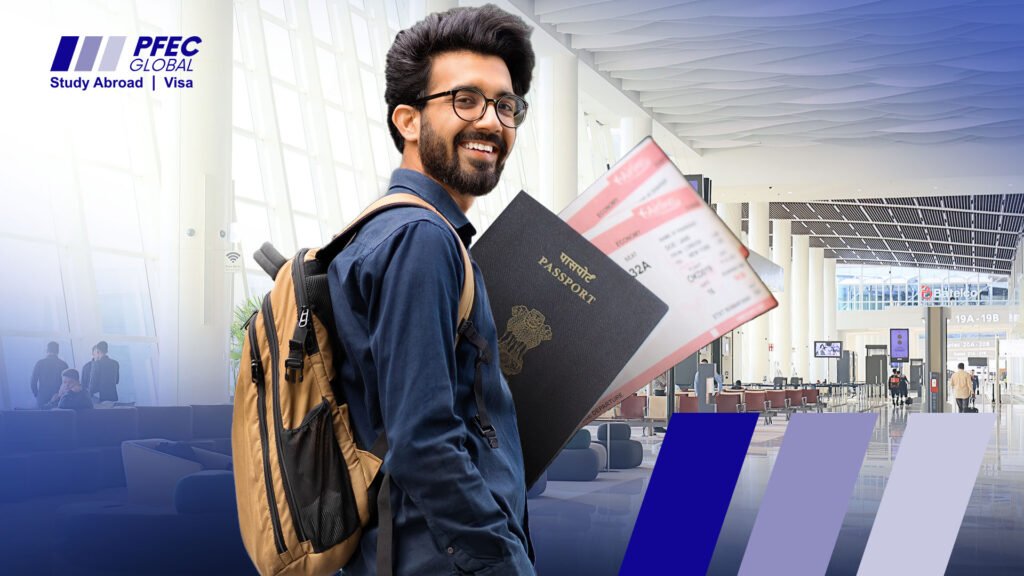Visa-on-Arrival for Indian Students: What You Need to Know
- Priyanka Chandwani
- 8 min Read
The article explores the concept of Visa-on-Arrival (VoA) for Indian students, highlighting that this facility allows students to obtain visas directly upon landing, instead of applying in advance. It emphasizes that VoA is usually intended for short stays like tourism, exploration, or initial visits, and not directly for long-term study purposes. Countries offering VoA or similar entry options to Indian travelers include Sri Lanka, Maldives, Cambodia, Indonesia, and Thailand. For students, the article suggests using VoA for preliminary visits, while full study programs require a proper student visa. It advises checking country-specific rules before planning travel.

What is Visa-on-Arrival?
Free education typically refers to zero tuition or nominal fees at public universities, though students must cover living expenses, administrative fees, and sometimes health insurance or course materials. For conventional study destinations like Australia, USA, UK, and Canada, tuition fees generally range between ₹10 to ₹20 lakh per year, excluding living costs. By contrast, several European and Nordic countries waive or greatly reduce tuition fees for international students.
Top Low-Cost or Tuition-Free Destinations
- Definition: Visa-on-Arrival is a facility allowing travellers to get a visa when they land in the destination country—either at an airport, sea port, or land border—rather than having to apply in advance at an embassy or consulate.
- Difference from Other Visa Types: This is different from visa-free travel (where no visa is required in advance or on arrival), e-visa (visa obtained online before travel), or student visa (often requiring more documentation and approvals).
- Advantages:
- Less administrative burden and often faster processing.
- Less need for interacting with embassies far away.
- Useful in situations where timelines are tight.
- Limitations / Risks:
- Not all visa requirements can be satisfied on-arrival—sometimes you need pre-approval or special permits.
- Entry may still be denied if you don’t carry required documents.
- Costs (visa fees, any mandatory health/travel insurance, etc.) may still apply.
- Duration and extension rights can be more limited compared to full student visas.
Countries Offering Visa-on-Arrival for Indian Students
1. Cambodia
2. Maldives
3. Sri Lanka
Sri Lanka offers an Electronic Travel Authorization (ETA) system that functions similarly to Visa-on-Arrival. Indian students can apply online or obtain entry clearance at the airport for short stays, usually up to 30 days. For academic purposes, Sri Lanka is emerging as a destination for cultural studies, Buddhist philosophy, and regional exchange programs. Students should carry acceptance letters, proof of funds, and return tickets to avoid issues at entry. For long-term study programs, students must convert to a proper student visa after arrival. With its proximity, affordability, and cultural similarity, Sri Lanka is a convenient choice for Indians.
4. Thailand
Thailand is a favourite destination for Indian travellers, and it provides Visa-on-Arrival for up to 15 days. While this is useful for short-term courses, internships, or study tours, students enrolling in degree programs will need to apply for a proper education visa in advance. The VoA requires documents such as a confirmed return ticket, accommodation proof, passport photographs, and sufficient funds (often around THB 10,000 per person). Thailand’s affordable education, especially in hospitality, business, and language courses, makes it attractive. However, students should plan carefully, as the VoA duration is not sufficient for longer academic stays.
5. Indonesia
Indonesia offers a Visa-on-Arrival to Indian citizens, generally valid for 30 days and extendable once. For students, this is ideal for short courses, cultural programs, or exchange semesters. Requirements include a valid passport, return ticket, proof of accommodation, and sufficient funds. While VoA works for short-term academic activities, full-time students pursuing degrees in Indonesian universities must apply for a student permit in advance. Popular fields of study include arts, culture, and Islamic studies, given Indonesia’s strong academic networks in these areas. Students should also prepare for possible in-country conversions if their program extends beyond the VoA validity.
Conclusion
Visa-on-Arrival can be a useful option for Indian students planning short-term study abroad experiences such as exchange programs, summer schools, or cultural courses. Countries like Cambodia, Maldives, Sri Lanka, Thailand, and Indonesia make the entry process simpler, saving time and reducing paperwork. However, VoA is not always suitable for full-time degrees, as it often comes with short validity and limited rights.
At PFEC India, we help students choose the right study destination and visa type based on their academic goals. If you’re exploring international education, consult our experts for guidance on the best visa pathway for your future.
FAQs
1. Can Indian students study abroad on a Visa-on-Arrival?
2. Which countries offer Visa-on-Arrival to Indian passport holders?
3. What documents are needed for Visa-on-Arrival?
- Generally, you’ll need:
Valid passport (6+ months validity) - Return/onward travel ticket
- Proof of funds (bank statements or cash)
- Accommodation confirmation (hotel or hostel booking)
- Acceptance letter (if studying)
- Visa fee (cash or card)
- Recent passport photographs
4. Can I work on a Visa-on-Arrival while studying?
5. How long can I stay on a Visa-on-Arrival?
It varies by country:
- Cambodia & Indonesia: 30 days (with possible extension)
- Maldives: 30 days (extendable up to 90 days)
- Sri Lanka: 30 days via ETA (extendable)
- Thailand: 15 days (strict, not extendable in most cases)
6. Is Visa-on-Arrival suitable for degree programs?
No, Visa-on-Arrival is not recommended for full-time degree programs. Universities typically require a student visa for enrollment, residency, and compliance with local education laws. VoA is more useful for short stays or bridging until a student visa is granted.
7. Can I extend a Visa-on-Arrival to a student visa after arrival?
8. How much does a Visa-on-Arrival cost?
Fees vary by country:
- Thailand: Around THB 2,000 (~₹4,500)
- Cambodia: Around USD 30 (~₹2,500)
- Indonesia: Around USD 35 (~₹3,000)
- Maldives: Free for 30 days (fees apply for extensions)Always carry some local currency or USD cash for payment at the airport.
9. Do I need travel insurance for Visa-on-Arrival?
10. Should I choose Visa-on-Arrival or apply for a student visa?

Take your Study Abroad Dreams to the Next Level
Receive free end-to-end assistance and personalized guidance from experts
Get Started for FREE →
